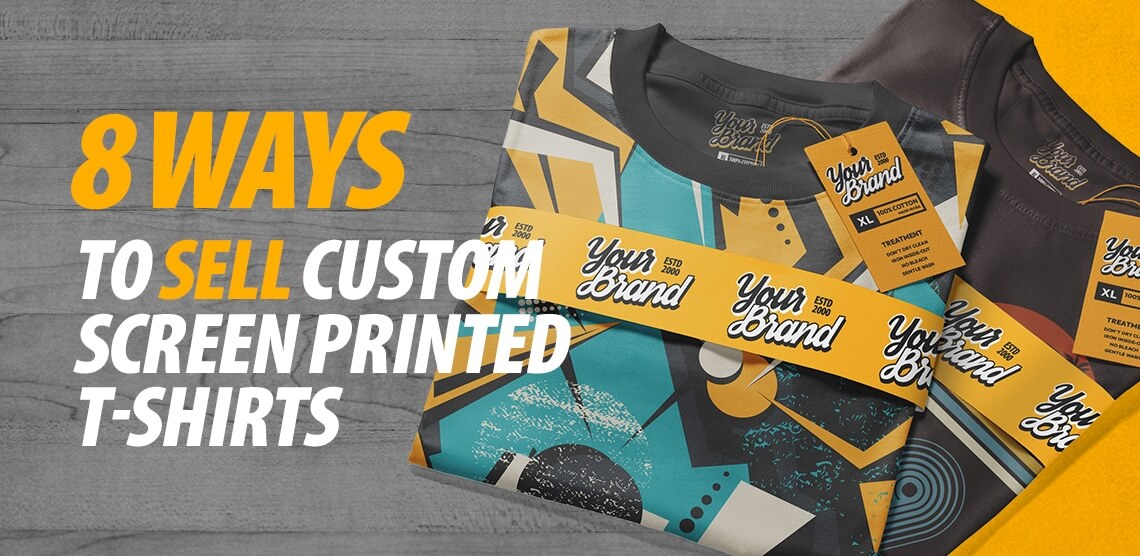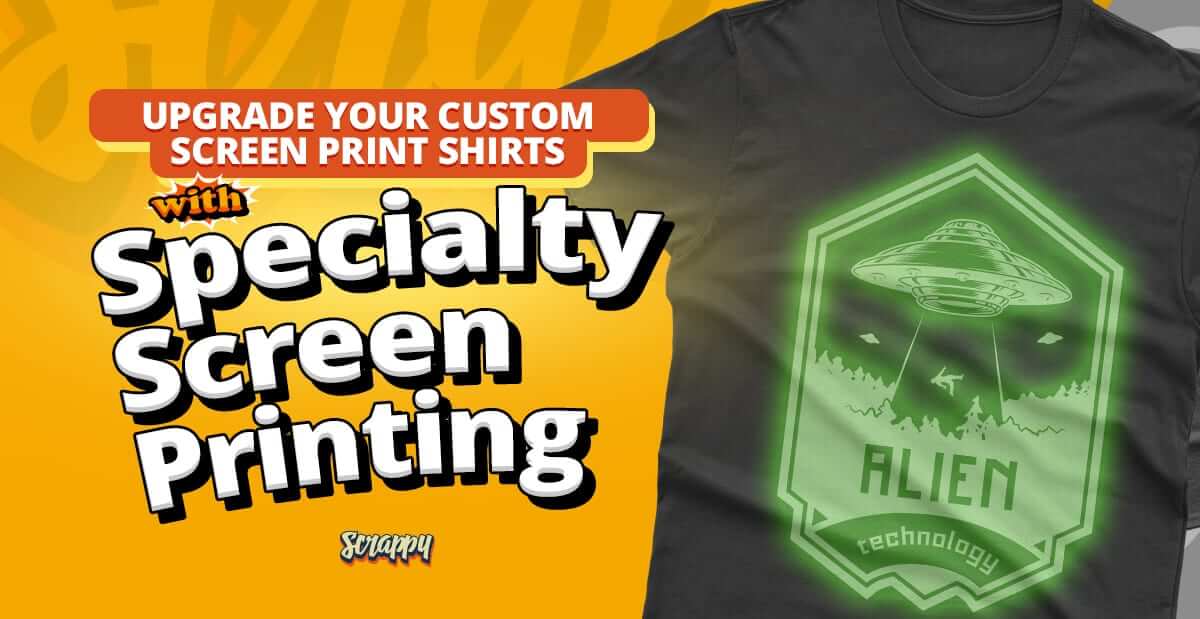Complete Screen Printing Kit for Artists and Creators
Complete Screen Printing Kit for Artists and Creators
Blog Article
Display Printing Uncovered: Every Little Thing You Required to Learn About Tee and Garment Printing Strategies
If you have actually ever asked yourself exactly how those vibrant styles finish up on your favored tees, you remain in the ideal area. Display printing is a remarkable method that incorporates art with strategy, providing endless opportunities for creativity. Recognizing the basics, from tools to ink choices, can greatly impact your outcomes. Ready to discover the necessary components that make display printing an art kind? Allow's reveal the information that can raise your projects.
The Fundamentals of Screen Printing: Just How It Functions
When you dive into screen printing, you'll discover it's both an art and a scientific research. At its core, display printing entails producing a stencil, or display, that enables ink to go through just in details areas (screen printing kit). You start by selecting your style and preparing your screen with a light-sensitive solution. When you reveal this solution to light, it hardens, leaving your design as an adverse room.
Following, you'll mix your inks and prepare your printing surface area. Setting the display over the fabric, then make use of a squeegee to press ink via the display onto the garment. This procedure requires accuracy, as you want clear, vibrant prints. After printing, you'll cure the ink with heat, ensuring it sticks to the material and lasts with washes. Each step is necessary, and mastering them will certainly boost your display printing abilities, changing easy garments right into one-of-a-kind, expressive items.
Sorts Of Display Printing Strategies
When you grasp the fundamentals of screen printing, it's time to discover the numerous methods that can raise your styles. One preferred technique is standard display printing, where ink is pressed with a stenciled display.
Another alternative is plastisol printing, known for its resilience and dazzling shades, making it a favorite for numerous brands. Experiment with halftone printing to produce gradient effects and complex styles.
Essential Devices for Display Printing
To attain sensational results in screen printing, having the right tools is essential. You'll require a sturdy display printing frame, which holds the mesh that transfers your style onto the garment. Next off, invest in top quality mops; these are important for applying ink equally throughout the display.
Selecting the Right Inks and Products
When picking inks and products for screen printing, you need to take into account the kind of ink that functions finest for your project. Think of material compatibility to guarantee your designs look last and great long. Explore environmentally friendly ink choices to make your printing process a lot more lasting.
Sorts Of Screen Inks
Picking the appropriate display ink is important for attaining vibrant, long lasting prints that satisfy your job's requirements. There are several kinds of display inks to analyze. Plastisol ink is prominent for its flexibility and ease of usage, providing outstanding shade opacity on dark materials. Water-based ink, on the other hand, supplies a softer feeling and is green, making it excellent for those wanting to decrease their ecological effect. Release inks get rid of dye from the material, resulting in a soft, classic appearance but need certain handling. Specialized inks, such as metal or glow-in-the-dark, can add special results to your styles. Assess your job demands and choose the ink that straightens finest with your wanted outcome.

Textile Compatibility Considerations
Understanding material compatibility is important for attaining high-grade display prints, especially considering that different materials react distinctively to various inks. When choosing inks, think about the fabric kind-- cotton, polyester, or blends. For cotton, water-based inks function well, providing soft qualities and breathability. Polyester, on the other hand, commonly requires plastisol inks for far better attachment and lively shades. If you're publishing on blends, you could need to utilize a mix of both types. Constantly test your inks on example material to ensure they adhere effectively and preserve color stability. Additionally, bear in mind that textile weight and structure can affect the final result, so picking the appropriate ink and product combination is vital for your job's success.
Eco-Friendly Ink Options
Green inks are becoming a preferred choice for display printers who want to lessen their ecological effect while maintaining high quality. When choosing inks, take into consideration water-based inks, which are less damaging and less complicated to cleanse up contrasted to conventional solvents.
Additionally, search for inks made from renewable energies, such as soy or vegetable-based choices. By picking the right inks and products, you'll not only produce stunning styles yet likewise add to a much more lasting printing procedure. Make the button, and your prints will reflect your commitment to the setting!
Preparing Your Design for Display Printing

Submit Style Requirements
To ensure your design looks vibrant and sharp on textile, you'll need to pay close focus to submit format demands for display printing. Make sure your layout has a transparent background to protect against unwanted white edges on your prints. Maintain color settings in mind; CMYK is conventional for display printing, so convert your RGB develops appropriately.
Color Separation Methods
Color separation is a necessary step in preparing your design for screen printing, and understanding it can significantly check my site enhance your print quality. You'll require to damage your design right into individual shades, as each color requires a separate screen throughout printing. Start by recognizing all the shades in your design and create layers for each one. You can utilize software like Adobe Photoshop or Illustrator to isolate and separate colors effectively. Be particular to conserve each layer as a different file, generally in a format like TIFF or PSD. This precision not only guarantees precise color representation however additionally enhances the printing procedure. By paying focus to shade splitting up, you'll attain vivid and professional outcomes in your screen-printed garments.
Resolution and Size
Attaining the most effective lead to display printing begins with assuring your design has the right resolution and dimension. Ideally, your art work must go to least 300 DPI (dots per inch) for sharp, clear prints. Your last item might look amateur and pixelated. if you utilize lower resolution.
When it comes to size, take into consideration the measurements of your print location. Design your art work to match the final print size, ideally producing it in the actual measurements you'll be publishing. In this manner, you'll avoid any kind of unanticipated scaling problems.
Constantly check your style in both vector and raster formats. Vector graphics can be scaled without shedding quality, making them suitable for display printing. Preparing appropriately will ensure your design looks fantastic on every garment!
Step-by-Step Display Printing Refine
Display printing is a dynamic procedure that enables you to produce vibrant designs on different surfaces. To get begun, you'll need a display, solution, and your selected ink.
After rinsing the unexposed solution, your display is prepared. Set it up on your printing surface area and straighten your garment beneath it. Pour ink onto the screen and use a squeegee to press the ink through the stencil onto the textile. Raise the display thoroughly and let the print completely dry. Cure the ink utilizing warm to ensure durability. That's it! You have actually successfully display printed your style.
Tips for Effective Display Printing Projects
While you're diving into your screen printing jobs, keep in mind that prep work is key to success. Beginning by collecting all your products-- inks, squeegees, displays, and garments. A tidy work area helps stop undesirable errors, so clean up before you start.
Next, verify your artwork is high-resolution and properly sized for your garment. Examine your display for appropriate direct exposure and tidy it extensively to prevent smudges. When blending your inks, adhere to the supplier's standards to achieve the best uniformity.
Throughout printing, use also pressure with your squeegee for regular results. Do not hurry; take your time to confirm each print meets your requirements. After printing, allow your garments dry entirely prior to managing or packaging them.
Finally, constantly keep an example of your job for future recommendation. This way, you can analyze your progression and improve your techniques gradually. Happy printing!

Often Asked Questions
How Long Does It Require To Establish a Screen Printing Job?
Setting up a display printing job commonly takes about thirty minutes to an hour. You'll prepare the displays, mix inks, and adjust journalism. The moment varies based on complexity and experience, so stay organized!
Can I Publish on Different Textile Keys In Using the Very Same Method?
Yes, you can publish on different textile kinds utilizing the same strategy, yet you'll need to adjust your settings and inks. Some fabrics take in ink in a different way, so exploring warranties the most effective outcomes for every material.
What Prevail Mistakes to Prevent in Screen Printing?
When display printing, avoid usual mistakes like making use of the wrong ink, overlooking correct direct exposure times, or missing pre-press checks. Always evaluate your her comment is here configuration and maintain tidy screens to assure high quality results each time.
Exactly How Can I Appropriately Tidy and Preserve My Screen Printing Tools?
To properly clean and keep your screen printing equipment, you need like it to consistently clean screens with appropriate solvents, inspect mops for wear, and ensure all tools are kept completely dry and dust-free. Consistency avoids costly fixings and improves performance.
Is Screen Printing Eco-friendly Contrasted to Other Methods?
Display printing can be extra eco friendly than various other methods, specifically if you make use of eco-conscious materials and water-based inks. By choosing sustainable supplies and practices, you lower waste and decrease your effect on the earth.
Screen Printing Uncovered: Every Little Thing You Need to Know Concerning T-Shirt and Garment Printing Techniques
At its core, display printing entails producing a stencil, or screen, that enables ink to pass through only in particular areas. Placement the screen over the textile, then utilize a squeegee to push ink through the screen onto the garment. One preferred technique is conventional screen printing, where ink is pressed via a stenciled display.When picking inks and materials for screen printing, you require to take into account the type of ink that works ideal for your job.
Report this page